
Bufo quercicus
Photo by JD Willson
Listed: N.C. Natural Heritage Program, Significantly Rare
Description: This small toad may be brown, gray or nearly black, often with scattered reddish warts. Its belly is usually mottled with dark pigment. Juveniles of our three larger toads (American toad, Fowler’s toad and southern toad) are often mistaken for oak toads, but this species may be distinguished by the prominent whitish, yellowish or orange stripe running from the tip of the snout down the entire length of its back, and the large dark spots on its back that are arranged in three to five pairs.
Habitats and Habits: Oak toads are found only in the Coastal Plain and inhabit pine flatwoods, savannas, sandhills, and some pocosins (shrub bogs) and maritime forests. Adults are found on land and are often active by day. Females deposit several hundred eggs. Unlike the long strings of eggs laid by the larger members of the family, oak toad eggs are deposited singly or in small strands of up to six or eight eggs, either free-floating or attached to vegetation. Tadpoles develop in about four to eight weeks.
Call: Oak toads breed from April to August, usually in temporary wetlands, such as shallow ponds, ditches, rain pools or flooded agricultural fields. Their call is a high-pitched, continuously repeated “peep!” and is often compared to the vocalizations of young chickens. Their inflated vocal sac is oval-shaped, unlike the more spherical vocal sacs of our other three toads.
Frog Fact: Once abundant in many parts of the Coastal Plain, oak toads have undergone a dramatic decline in recent years. Habitat destruction is one obvious reason but does not account for their disappearance from areas where good habitat is still present. Other factors contributing to their decline may include disease, acidification of breeding sites due to fire suppression, and predation from the imported red fire ant.
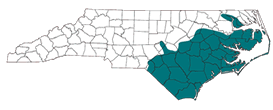
The shaded region represents the range of the oak toad in North Carolina.
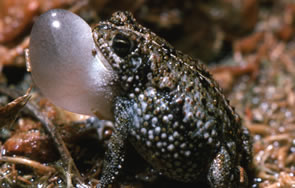
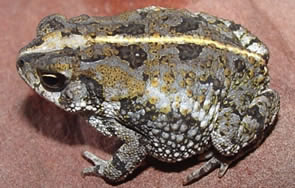
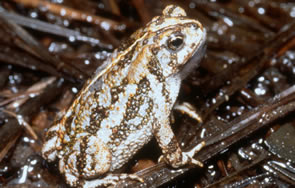
Photo by R Zappalorti
Oak toads are recognizable by their small size and prominent light stripe down their backs.
Photo
by Aubrey Heupel
Photo by Michael B. Keck
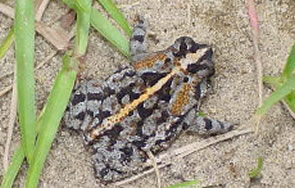
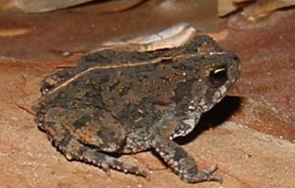
This website created by: Grant Connette and Evan Eskew.
Davidson College, Davidson, North Carolina 28035-1719.
Text and maps from: The Frogs and Toads of North Carolina. North Carolina Wildlife Resources Commission, Raleigh, NC.
Partial Funding for this website provided by a Associate Colleges of the South, National Science Foundation, and Duke Energy.